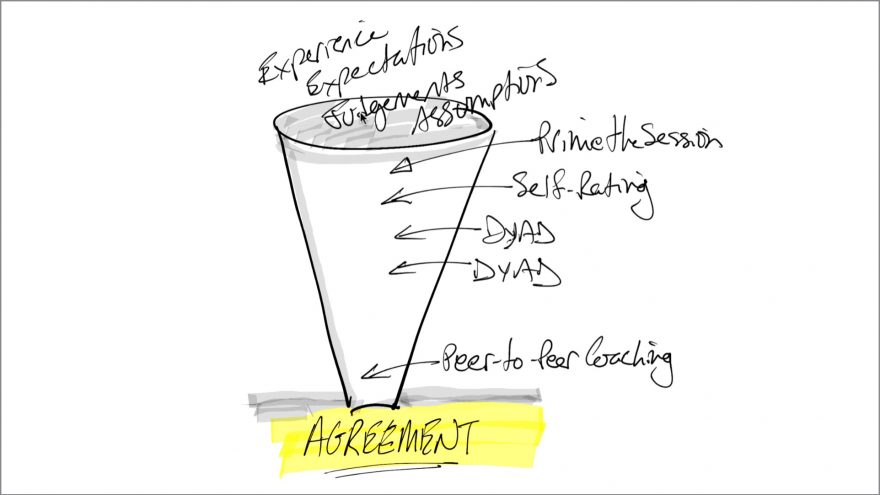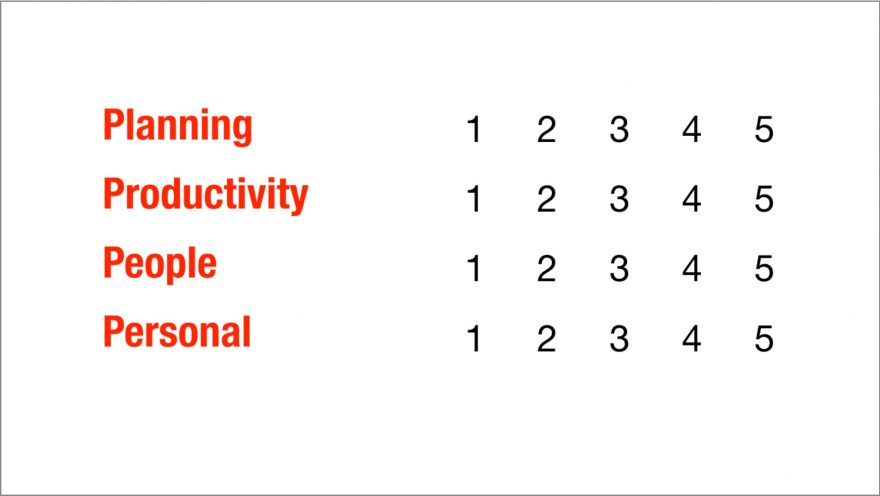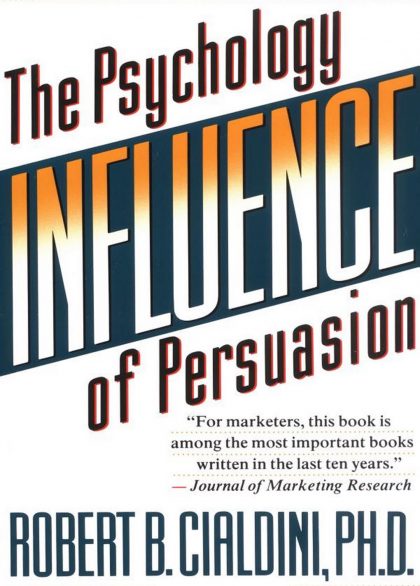The secret to making any meeting, speech or presentation outstanding
Congratulations - you’re about to give a speech! Or maybe you’re speaking at your bi-weekly team meeting, or it’s a presentation at your company’s annual dinner.
The problem is you’re boring.
To be fair, it’s not so much you that’s the problem - it’s your audience.
There’s lots of research on this, but when I present, I expect 12-18 minutes is the limit of my audience’s attention (guess what the length of a TED talk is?). After that, eyes start to wander, expressions go blank and smart phones are being checked under the table.
As if checking your email wasn’t enough, I recently watched a manager reach into her purse, pull out a nail file and go to work her cuticles.
Your experience will be very different from your audience - you’re moving, formulating your next argument, clicking slides and telling stories. You think your speech is going well - but your audience is having Margaritas in Puerto Vallarta.
The old days of stump speeches when crowds happily listened undistracted to pontifications from the podium are gone! Dear speaker we’re fighting goldfish-short attention spans and we have to work to hold our audience’s attention.

But it’s more than that - you need to make them work.
If you are trying to engage an audience in problem-solving, motivate them about a new project, or solicit feedback about past projects, their attention is essential.
This is what I’m up against every time I clip on a lavaliere microphone and step on stage or pick up a felt pen in a workshop.
I know my audience is going to wander. And that’s why I regularly employ a few tricks to haul those dendrites back into the room.
But, I’m getting ahead of myself. First we need to look at your strategy.
START WITH STRATEGY
Whatever your meeting or presentation goal is, you need to think it’s a funnel. At the top of the funnel are all the bits of information, judgments, assumptions, history, and expectations your audience walked into the room with. It’s a messy place.

And they all have a story going on, like this:
“We’ve tried it before.”
“This is long overdue and I can’t wait to dive in.”
“Here we go again - we’ve heard this before.”
“I’m so swamped, I wish we were having another damn meeting!”
“It doesn’t matter how often we meet, nothing ever changes.”
“I know we need to do something, I’m just not convinced this is the right way.”
As you move down the funnel your job is to nudge objections and negative expectations out and invite the positive, reinforcements in. And you don’t do that by talking more.
Sure, you need to respond to negativity, reinforce your arguments - maybe add more information. But, the most effective way to get a crowd to agree is for them to reach the conclusion on their own.
Here’s how:
When your audience, or team, listens they do it through filters—we hear what we want to hear.
If you make an argument that fits with their way of seeing the world - it’s accepted through their filter. But, if you make an argument contrary to how they see the world, it gets bumped onto the “Thanks, but no thanks” list.
Continuing to click through slides and ramble on about the 14% increase in customer retention, or results of the latest employee engagement survey won’t help. It’s just more information being accepted or rejected and you won’t have a clue what list is getting longer.
Until you do one thing:
Make them work.
PUT THEM TO WORK
It’s a bit counter-intuitive, but the less you talk and the more you put your audience to work the more valuable you become. Of course you can take this to the extreme - that’s called facilitation - when the audience does ALL the work.
Here we’re talking about a balance between you doing all the speaking and, maybe you speaking 80% of the time.
I start with commitment. In psychology it’s called priming - I’m getting the audience to agree they want a positive outcome from this meeting.
Here’s how I do it:
PRIME THE PUMP
After some opening remarks, or a story that’s relevant to our topic, I announce what we’ll be talking about. Ideally, this is reinforced with points on a printed agenda or a Powerpoint slide.
Next, I prime the conversation by asking:
“Of everything I’ve just listed, which one is most important for you to learn/work on/resolve/create a plan for?”
Note, I’m not asking them if they want to, or are interested in doing any of these things, I’m presupposing they are willing and interested - I’m priming them to want to work on the topic.
I can then either solicit verbal feedback or collect it as a check-list on a flip chart to be referred back to later in the session.
The point is, now they want to reach an agreement.
Next, I want my audience to recognize a need. Sure, if you’re talking about increasing sales, or ramping up customer service quality, or shortening client on-boarding time, those are all laudable objectives - hard to argue with 2 plus 2 equals 4.
But, when you go one step further and get people to discover a gap between where they’re at and where they want to go, the conversation changes immediately.
It’s no different than stepping on a bathroom scale - it’s hard to argue with a number.
That’s when I use a self-rating scale to identify a gap.
MAGNIFY THE GAP
I’ve been using this one a lot lately and it’s a winner. The idea is to have the audience quantify their “problem” - to turn a subjective issue into a tangible score they naturally want to increase.
The self-rating technique is a simple rating from ‘1’ to ‘5’ where delegates rate themselves.
If I’m using handouts (for a seminar), I ask them to fill-in the blanks, one word at a time and then to rank themselves on a scale from 1 to 5, where ‘5’ is consistently effective.
For example, for leaders, I might use: Planning, Productivity, People and Personal.
If I’m focussing more on communications, I might use: Listening, Feedback, Praise, Difficult conversations.

If I’m not using handouts, I simply instruct the audience to write down one word on the hotel notepad and then to rate themselves.
No one ever gives themselves a ‘5’ and in less than two minutes I have their full attention.
To reinforce the need for change, I can repeatedly return to their results by asking: “What will it take for you to raise your score by ‘1’?”
Once they have their benchmark, my next goal is to have them find points of agreement.
GETTING TO YES
Just like in any argument, a positive strategy is to find points of agreement. Every point of agreement puts you one step closer to overall agreement.

This is my fail-safe, damn-the-torpedoes technique. I call it the ’90 second dyad’ and it sounds like this:
“In a minute I’m going to ask you to turn to the person next to you.” Usually, I add: “Don’t worry if there are a few groups of 3, but do your best to form groups of 2.”
Note: in small venues, I will quickly help them form groups of two – some adults have trouble with math.
“Next, I’m going to give you 90 seconds to share with your partner ________________.”
“OK, choose your partner, Go!”
Obviously, second time around requires less instruction.
In every dyad I’m getting them to focus on what they can move forward on from what we just discussed. For example:
In communications: “What is one thing you know you can do to be a better listener?”
In leadership: “When do you struggle in coaching, and what’s a solution?”
In customer service: “Describe a situation when we failed to deliver great customer service - what would be a better way next time?”
The 90-second dyad (done right) guarantees 100% participation, the energy is up, your audience is moving toward solutions (down the funnel), the meeting planner loves you and you look like a rock star.
In a 60 minute presentation I might have 2 dyads and one peer-to-peer coaching dyad (see below). Hint: get them to stand and the energy in the room shoots up another notch.
As you work through your content and the group process you need to keep an eye on what happens next—outside the room is where the action happens. The bottom of the funnel is when you need to get agreement on next steps.
AGREE ON WHAT NEXT
As a speaker, I’m very limited in my ability to get individual commitment on next steps. The best I can do is for them to do that work. This is where I use peer-to-peer coaching.
Super simple to set up, peer-to-peer coaching allows everyone in the room to experience a gentle nudge from their partner and to take a turn at being the nudger. It works like this.
First you frame the coaching. Too broad and it goes no where, too narrow and they might get stuck. The best frame is the subject you’ve been working on, but from their perspective. It can sound something like this:
“We’ve covered a lot of important material in this session.”
“Now I want to give you a chance to really get focussed on just a few things you know are important and what you are planning on doing about them.”
“Please turn to your partner one more time and this time let’s have the person with the shortest hair go first (steal that one, it always gets a laugh). You’re sharing one thing you know you or your team needs to work on, and what you plan on doing about it.”
“Your partner, long hair, will be your coach. Now, you’ll only have 90 seconds each, but it’s enough to dig a bit deeper. Long hair, your job is to listen carefully and ask a couple of great questions to help your partner be even more specific in their commitment. So, if your partner, short hair, says ‘I need to be more organized’ you might ask them to explain what area they need to be more organized in.”
In this post I’m showing you 7 techniques I use the most frequently (check out the “Art Gallery Tour” for workshops that generate lots of flip chart paper!) to get audiences’ participation.
You have primed the conversation, created benchmarks, found points of agreement and even gotten them to coach each other. You’ve also reached the bottom of the funnel. Brilliant!
But there’s one more candle to add to your cake.
You need social proof.
SEEK SOCIAL PROOF
In every audience, team meeting, staff celebration, there are holdouts. These are often the analyzers who resist going with the flow, simply because it irks them to be “one of the crowd” and they genuinely have reservations about the trail the mob is now blazing.
They need proof.
That’s when I go for social proof. “We seem to assume that if a lot of people are doing the same thing,” wrote Robert Cialdini, in his seminal book Influence, “they must know something we don’t.”

For example, if you ask your audience if they’re enjoying your presentation and 80% immediately break out in applause, the rest of the room (thankfully) will join in.
Soliciting social proof from your team, or employees, or audience can sound like this:
“Was this enjoyable and a valuable use of your time?”, or
“Do you think that we really moved forward on this topic?”, or
“How do you feel, compared to where we started this morning? Do you feel like we have made progress?”
Any one of these, and dozens more, will point your audience towards a positive reflection and gain the social proof to get the whole room onboard.
FIGHTING FOR THE FUNNEL
I cut my speaking teeth as a trainer, day after day, fighting for class attention, and as a facilitator inventing ways to make flip chart lists interesting and to move down the funnel.
I learned early on you can lose audience’s attention as fast as you can say “I have just 86 more slides in my presentation.”You can also win back their attention with any one of these techniques.
Maybe your temptation is to keep on talking - throwing out more evidence, encouraging group feedback, or clicking through another dozen slides.
Don’t.
In ALL CASES if you are losing the attention of your audience or they are resisting your arguments you MUST put them to work. More information will only serve to make them more entrenched.
The next time you’re planning a meeting or presentation, or sweating bullets with 30 minutes left to bring a group process to a close, don’t wait for your audience to move down the funnel and reach some brilliant solutions.
Make it happen.
Small Wins - Why Little Steps are the Path to Big Rewards
Keynotes and workshops by Hugh Culver


